In this article we will talk about the focal length of a lens. A great stranger to most who are starting out, and a (fundamental) ally when you meet her.
I will explain what the focal length and the angle of view are, the differences between the different types of lenses according to their focal length and in what situations it is convenient to use one or the other so that you can get the most out of them.
You can not lose this! Get ready, it's a long article. Of course, I am going to make it as simple as possible, but very complete, so that you have all the information in the same container. You will want to save it to return to it more than once.
WHAT IS FOCAL LENGTH?
The focal length is the distance between the optical center of the objective, and the sensor or focal plane on which the image is projected. It is also known as “focal length”, and is measured in millimeters.
In photography, the greater the focal length, the greater the "zoom" the lens will have, and the less part of the scene it will capture. The smaller the focal length, the more "far" things will look, let's say, but the frame or angle of view will be much wider instead.
Better to see it with the following examples, same scene, from the same position, with different focal lengths.

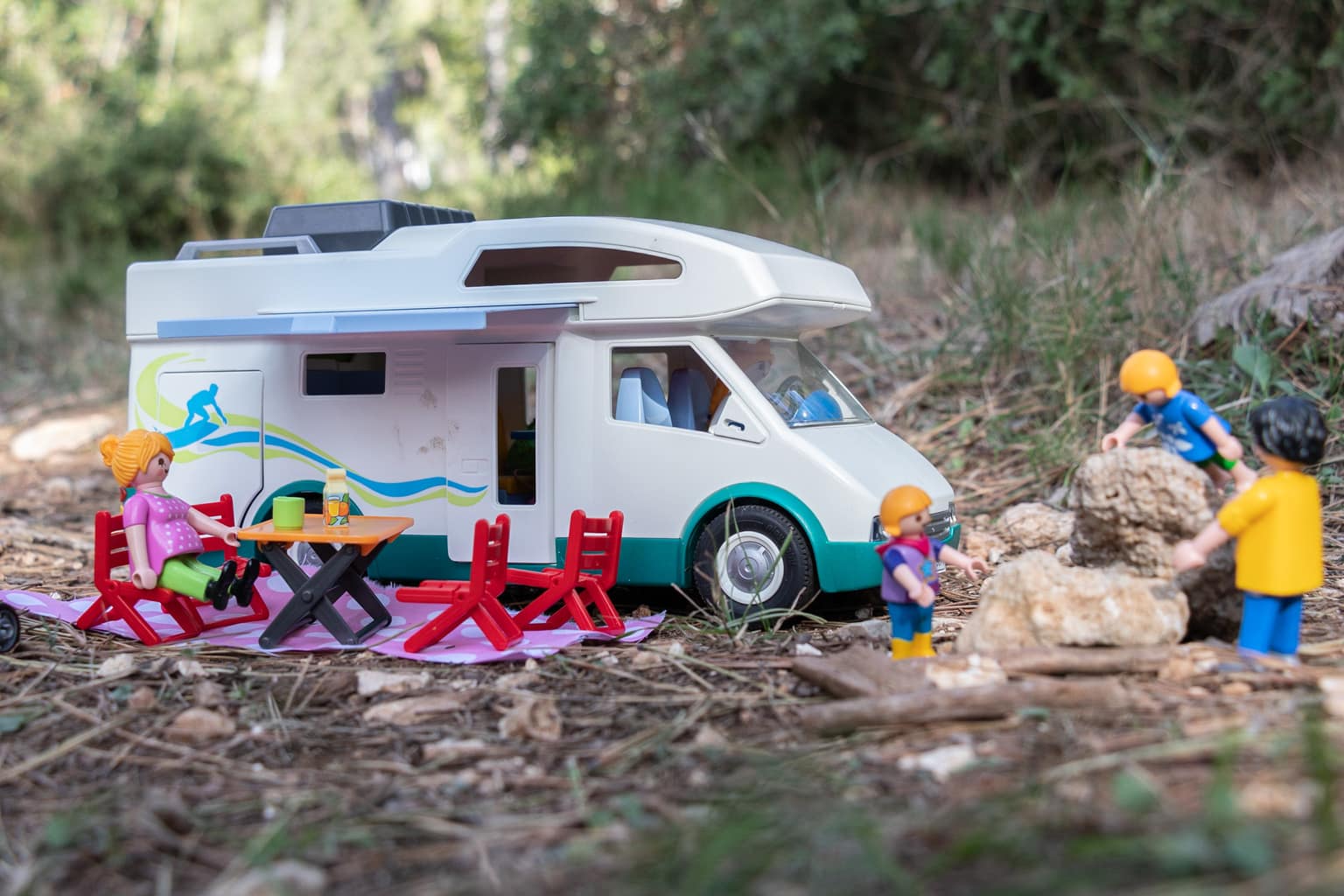
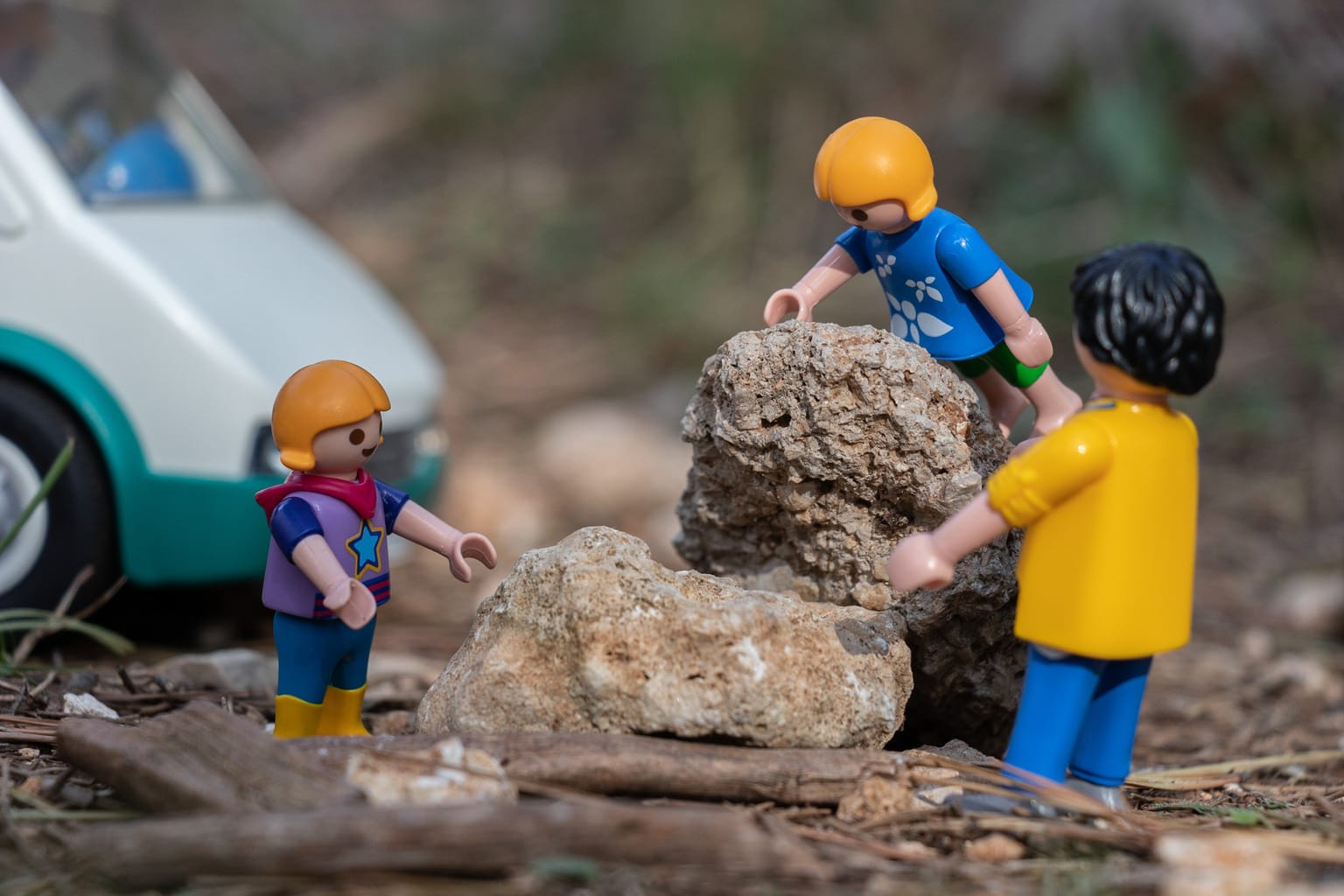

FOCAL LENGTH EXAMPLE
To further avoid getting into too many technicalities, the focal length is not measured from the sensor to the front lens of the lens, but is measured from the point where the light rays cross within it and are directed towards the sensor.
This point is very close to where the diaphragm is located and is called the optical center.

HOW IS FOCAL LENGTH (OR FOCAL LENGTH) MEASURED?
The focal length is measured in millimeters (mm), the longer the focal length (the higher the number) is said to be a long focal length, the closer we get to the subject and the less scene it covers. The shorter the focal length (smaller the number) the more scene it captures.
Just so we understand each other: a 70mm focal length means that the lens is able to get much closer to the photographed subject than an 18mm focal length lens and will show less of the scene.
And a 200mm lens will have an even greater ability to get closer to the subject, reducing the part of the scene that will be photographed.
EFFECTIVE FOCAL LENGTH
The focal length of a lens, regardless of its brand or model, uses the sensor size of a Full Frame camera (35mm) as a reference.
Why is this important? Because according to the size of your camera's sensor (Full Frame, APS-C, 4/3, etc.), the effective focal length of the lens will vary.
If you have a camera with an APS-C sensor that is smaller than full frame, such as a Canon 700D or Nikon D3100 , a 50mm lens on those cameras will equate to a 75mm if you're using a Nikon or 80mm if you're using it. you use Canon.
Why? The focal length of an objective depends on the size of the sensor of the camera in which it is placed and since the APS-C sensor is smaller than the Full Frame standard, to know the effective focal length, you must multiply the original distance of this by a multiplying or trimming factor .
This factor depends on the brand (due to the size of the sensor), for example, for Nikon it is 1.5 and 1.6 for Canon.
HOW IS THE MULTIPLICATION FACTOR CALCULATED?
Just as a fun fact, if you want to know how the multiplication factor (also known as the conversion factor) is calculated, the following formula applies:
Full Frame (35mm) sensor width / Sensor width of your camera
If you do not know what the width of your camera's sensor is, you can check it on the manufacturer's page.
It is usually expressed as follows: 23.1×15.4mm. Being the first part (23.1mm) the width of the sensor.
HOW DOES THE CROP FACTOR AFFECT YOUR PHOTOS?
This interests you more. Imagine that you buy a lens with a focal length of 16mm because you intend to go on a trip and photograph incredible landscapes, but your camera has an APS-C sensor: its effective distance will not be 16mm but 24mm (being a factor of multiplication of 1.5).
Result: The lens is as wide as you might have imagined and the angle of view of the lens (now I'll explain what this means) doesn't allow you to capture the same portion of the scene that you would capture on a full sensor camera.
Let's see an example that we have taken from the Nikon simulator (we will talk about it below): same scene, from the same place with the same 24mm focal length. The difference, one is taken with a Full Frame sensor and the other with a DX sensor (this is what Nikon calls the sensor smaller than the Full Frame sensor).


Maybe this is how you see it more clearly, I have marked, approximately, the portion of the scene that the cropped format (DX) captures compared to the full format (Full Frame):
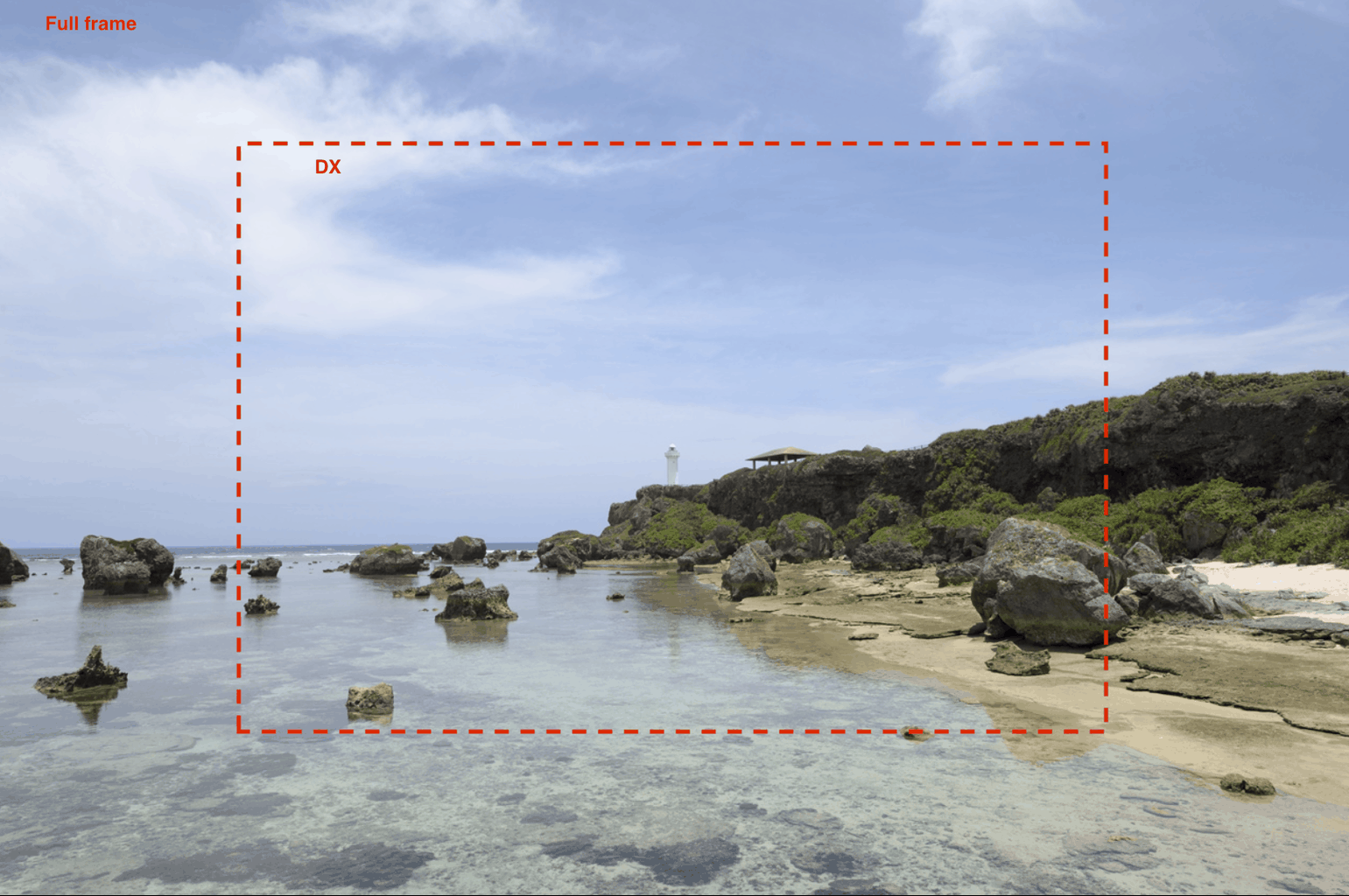
The effect appears to be like zooming in, but it's not really like that. Not that the lens zooms in any closer on a smaller sensor camera. Otherwise it is more of a cropping effect, as if you had the original photo taken with a full sensor and in the edition you cut it along the dotted line.
OBJECTIVE TYPES
Let's see what types of goals there are.
Mainly we can make two classifications, depending on the focal length and if it is fixed or variable .
First we will delve into this last point, below, we will talk about the classification based on its focal length.
Typically, most camera kit lenses are variable focal length lenses.
That is to say, they are objectives that normally have a focal length that goes from one value to another.
For example, it is very common to find varifocal lenses, from 18mm to 200mm .
This means that the objective has all that range and that we can regulate it as we want, using from a very high value such as 200mm, if we want to get closer to a relatively distant object; up to a much smaller value of 18mm, if what we want to capture is a complete frame of a panoramic scene, landscape, etc.
There are also lenses on the market with a fixed focal length, that is, you cannot zoom with them, they always work at the same focal length.
Those who read this blog regularly know how IN LOVE Mario is with what he calls the King of Lenses, the 50mm f/1.4 . If you want to know the supernatural, almost magical, properties of this king of targets, click here.
FIXED OR VARIABLE FOCAL LENSES?
But... which one should be used, fixed or variable focal length?
Each type of target, whether fixed or not, has advantages and disadvantages. Therefore, choosing the ideal one will depend on your tastes and needs as a photographer.
Here I leave you a small analysis of advantages and disadvantages so that you can evaluate what type of objective is the one you prefer.
FIXED FOCAL LENSES
Those that do not vary their focal length. They can be, for example, a 35mm or a 50mm, like the king I mentioned before.
Advantages of fixed focal lenses
- Higher optical quality , which translates into greater sharpness in your photographs.
- They are built with fewer moving parts, so they are usually stronger and more robust.
- Being optimized for their focal length, they produce fewer aberrations.
- Greater luminosity that will allow you to take better shots in low light conditions and less depth of field when working with more open diaphragms (f/1.4, f/1.8, f/2.8). They also usually offer very beautiful bokeh .
- Many of them are cheaper than the variable versions.
Drawbacks
- They are less versatile since, as we have said, their focal length is fixed. Still, this can be seen as an advantage, as you will be forced to move around the entire scene to get the perfect framing. Although for certain types of photography, the lack of versatility can really be a problem.
ZOOM OR VARIABLE FOCAL LENSES
Advantages of zoom lenses
- They are very versatile, comfortable and will allow you to adjust the frame without having to move.
- They are essential for certain types of photography where you require a greater focal variety, such as nature or sports photography.
- You gather a large number of focal ranges in a single objective, so you will avoid constantly changing lenses on your camera, gaining speed and avoiding blows and dust on the objectives and on the sensor of your camera.
Drawbacks
- They tend to be much more expensive than prime lenses , especially those that cover a long focal length such as an 18-200mm.
- By having a much larger number of moving parts, they are more fragile in the face of any blow or accident.
- Its weight and size is considerably greater.
- They are less bright, especially in the longest focal lengths.

MARIO'S EXPERIENCE WITH FIXED AND VARIABLE FOCAL LENGTHS
«My first camera was a Nikon D60 , it came standard with two lenses: one 18-55mm and one 55-200mm.
At first I was happy, I thought "this way I have an additional objective, two objectives will be better than one, I say...", I still had that mentality of the more things the better, the "live longing" as Mota would say.
But after a short time I realized that going on a photographic excursion with two lenses was not the most practical, since I had to change lenses every so often. I started noticing that there were people who had only one lens that went from 18 to 200mm, just one, so I thought “How handy! You don't have to go around removing one and putting another every so often ».
I made the determination to sell my two lenses and adding a little money to buy a single lens that had the widest focal length range (18mm-200mm).
After some inquiries I changed my mind again. Since then I continue to maintain the two different objectives (plus others that I bought). You will wonder why?
An objective, simplifying it a lot, is nothing more than a tube with a series of glass lenses inside. Those lenses are made to the best of their ability to take the best pictures for the focal length that lens was designed for. The wider the focal length range, the more difficult it is to get perfect photos . It's like a matter of specialization: an 18mm-55mm lens is specialized in that range and will therefore take better photos than an 18mm-200mm lens. «
MARIO'S GOLDEN TIP
Buying a single lens with a long focal length range isn't the end of the world either, you can still take decent photos with it (remember who takes the photos?).
In addition, it has the advantage of facilitating the task of having everything in one lens, but if what you really care about is getting a quality photograph , and you are willing to spare no effort to achieve it, then, dear reader and dear reader , it is best to have several lenses with short focal lengths or fixed focal lengths.
Thus, each objective will have its use and its moment. The more specialization, the better performance.
OBJECTIVES AND ANGLE OF VIEW
Having clarified the issue of fixed or variable focal length, we return to the focal length and it is that this is not the only element that you must take into account when evaluating a lens, but you must also pay attention to their angle of vision .
In this way you will be able to understand the different possibilities that a certain objective will allow you to exploit when taking your photos with it.
The angle of view is something like the "portion of the scene" that the lens can capture of it, but measured in degrees.
The more angular the lens is, the larger portion of the scene it will allow you to capture in the same photograph (greater angle), and the more zoom or telephoto it is, the smaller the portion of the image you will be able to capture in one photo (smaller angle). .
For example, a lens with a focal length of 300mm (effective focal length) offers an angle of view of approximately 8.15º. So if you use one, you will be able to fill the entire sensor with a much smaller portion of the scene (sensation of zooming in) than if you used, for example, your camera's 18mm kit lens (76º angle of view). , where the same portion of the scene would occupy a much smaller size in the frame.


Although lenses are classified and marketed according to their focal length, what is really important is the angle of view of each one of them.
In any case, each viewing angle corresponds to a focal length, so if you know both factors well it is almost like talking about synonyms.
In the following graph, you can see the relationship between the angle of view and the focal length of a lens:
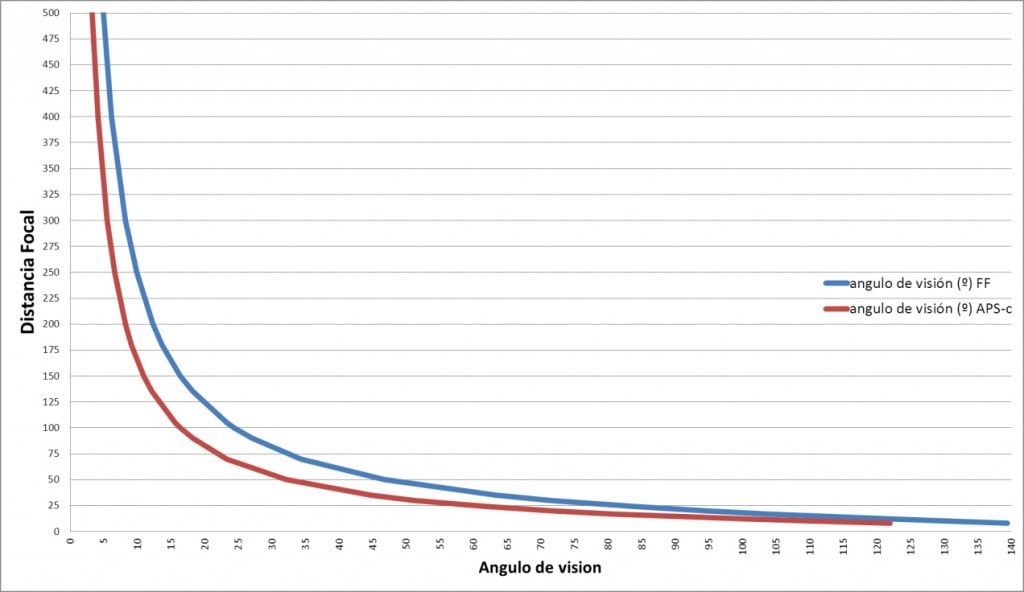
If you want to see how this works in practice but don't have enough lenses to try it yourself, I recommend taking a look at the lens simulator that Nikonput at your disposal to carry out all the tests you want, without spending a penny.
In this article you will see how this simulator works .
CLASSIFICATION OF OBJECTIVES ACCORDING TO THEIR ANGLE OF VISION
Since we know what the angle of vision is, let's see now what is the classification of the objectives based on this, first a graph, for a first visual approach, below I describe them one by one.
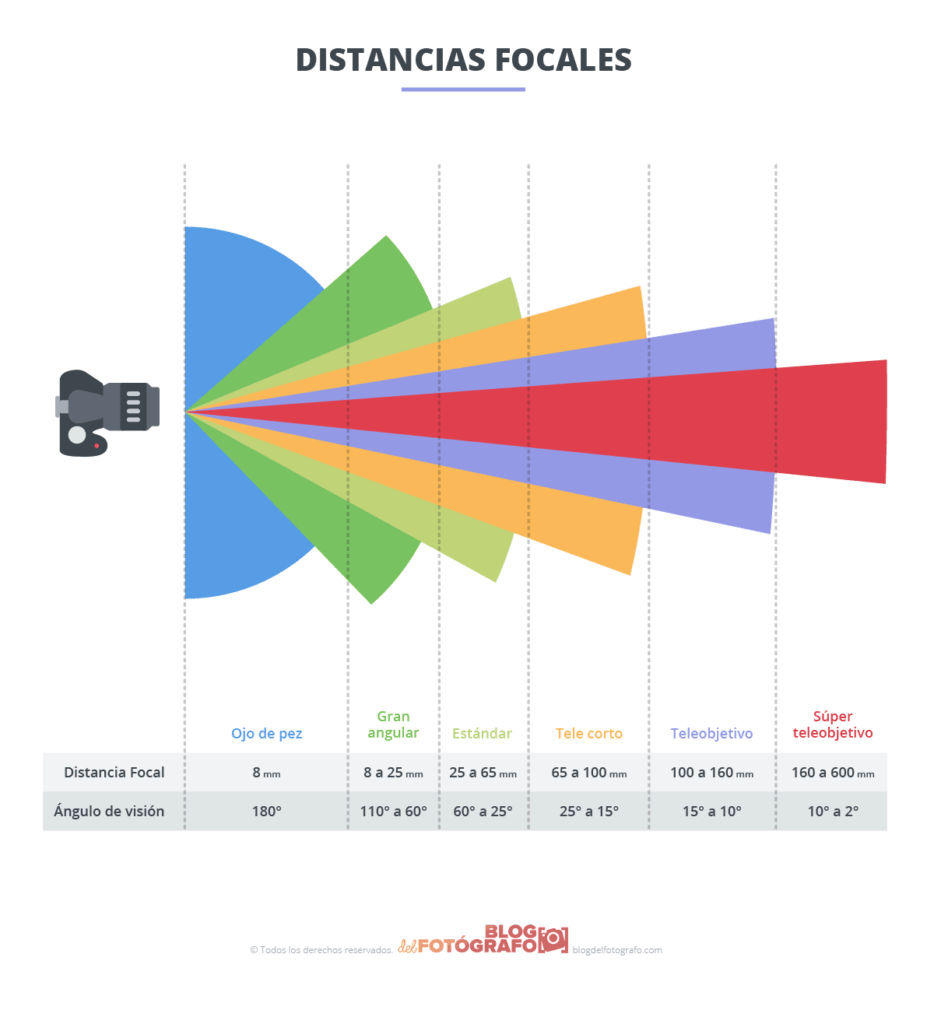
SUPER WIDE ANGLE
These so-called “fisheye” objectives can cover a viewing angle of 180º or even more and are those with a focal length below 8mm.
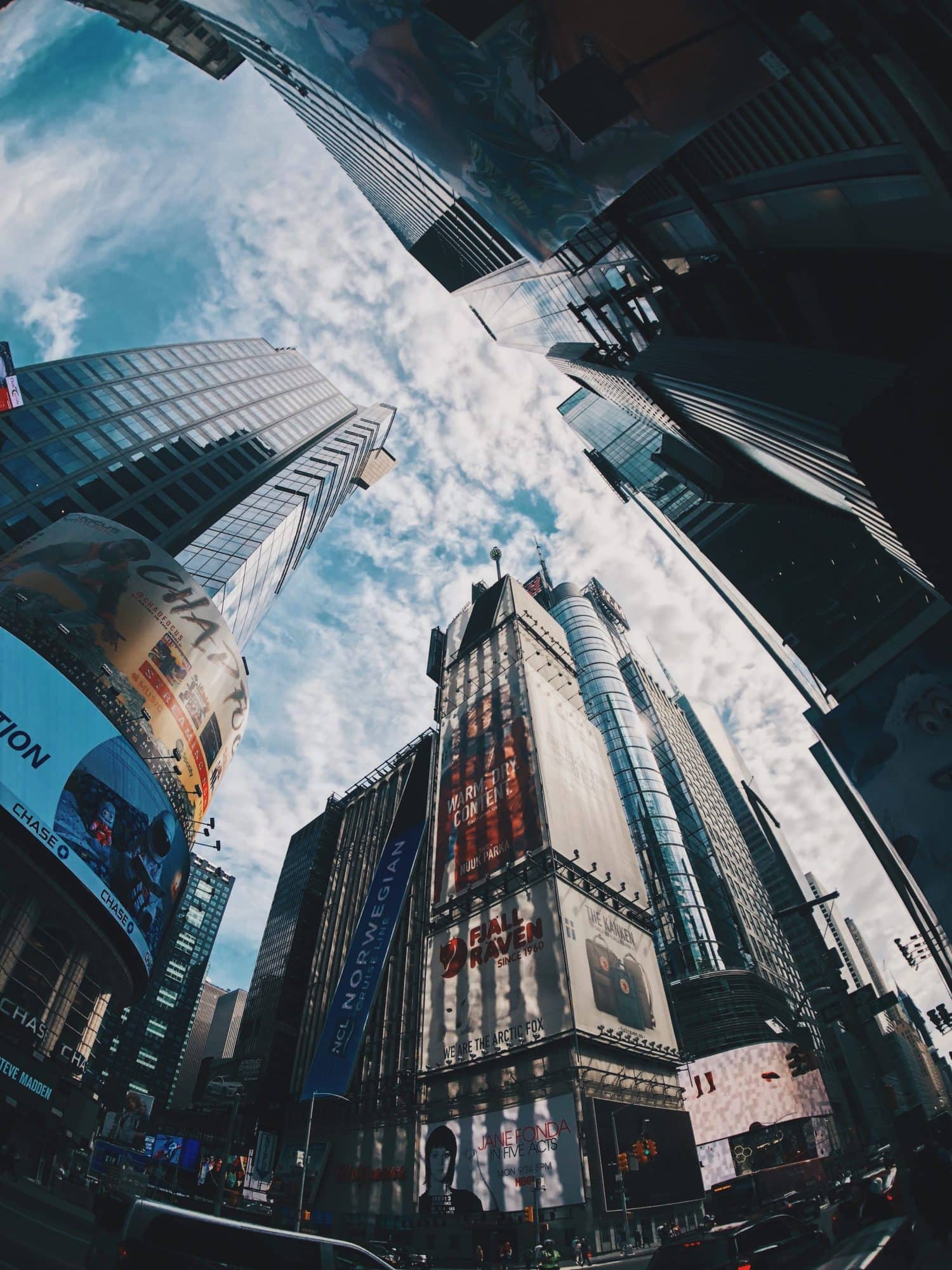
WIDE ANGLE
They are those objectives that cover an angle of vision between 110º and 60º, which would represent an effective focal length between approximately 10 and 25mm.
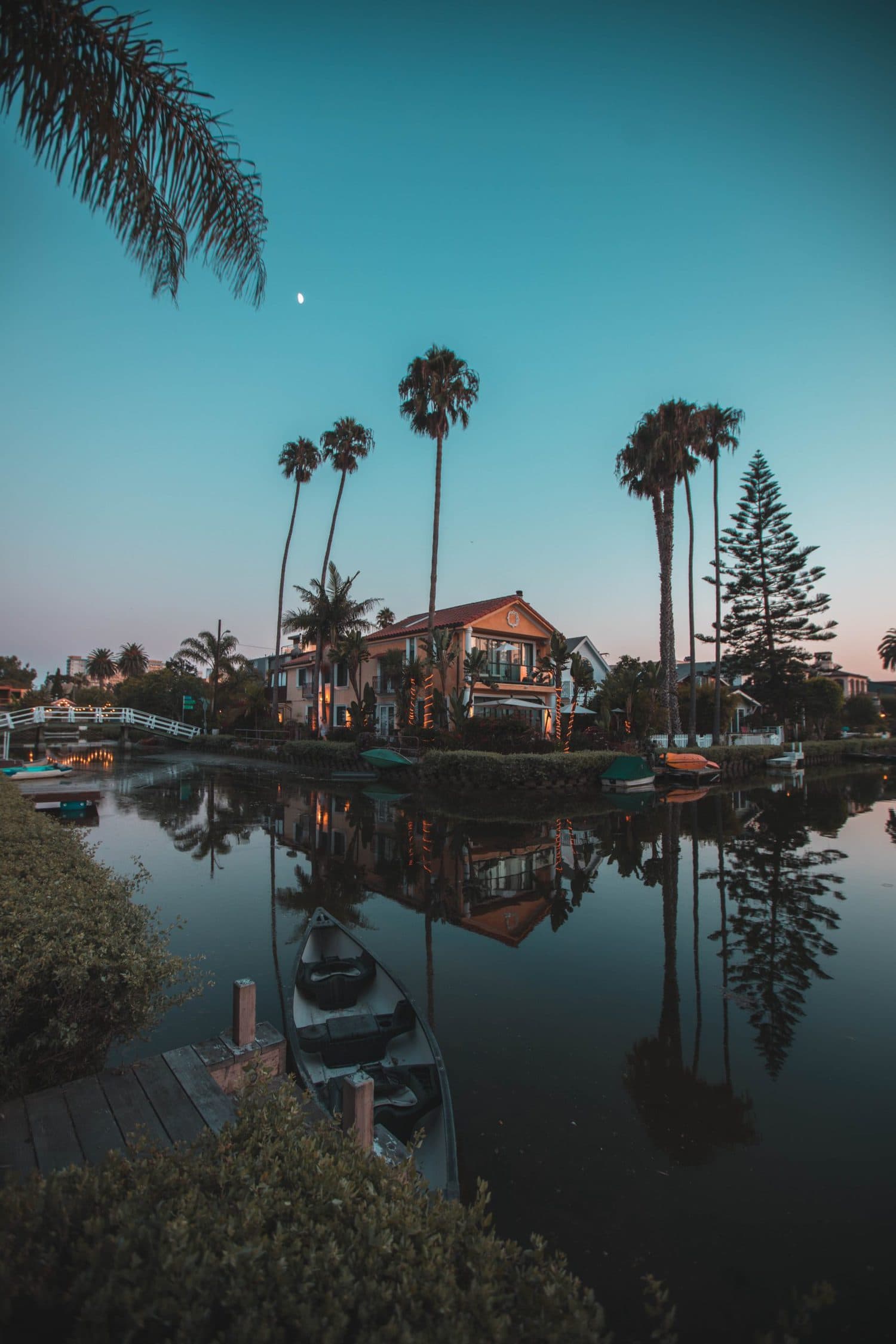
STANDARD
They are all those objectives that cover a viewing angle between 60º-25º. Its focal length is between 25 and 65mm, approximately.

SHORT TELE
They are those that cover a viewing angle of 25º to 15º. We are talking about a focal length between 65 and 100mm.
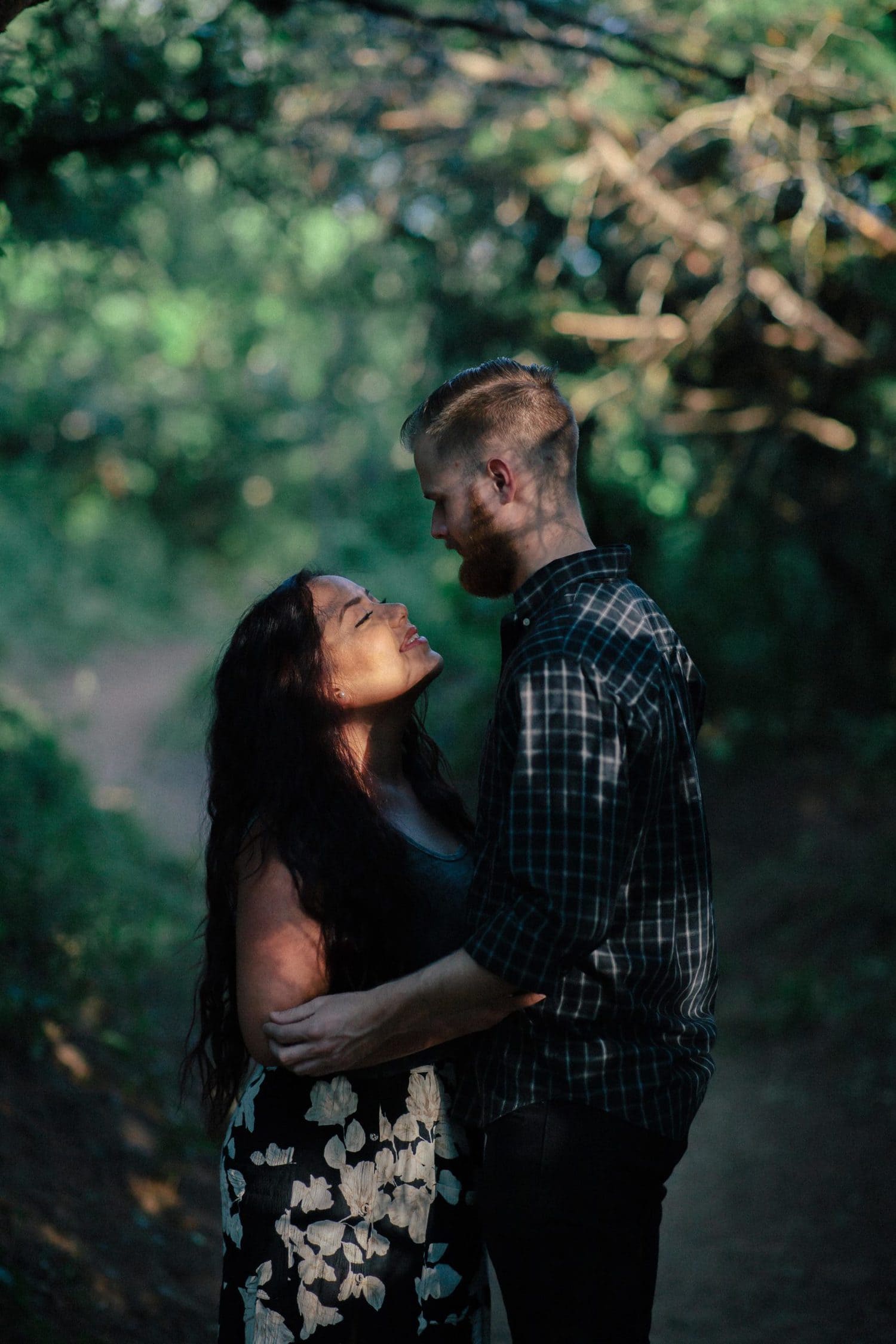
TELEPHOTO LENSES
They cover a viewing angle of 15º to 10º, which corresponds to a focal length of 100 to 160mm.
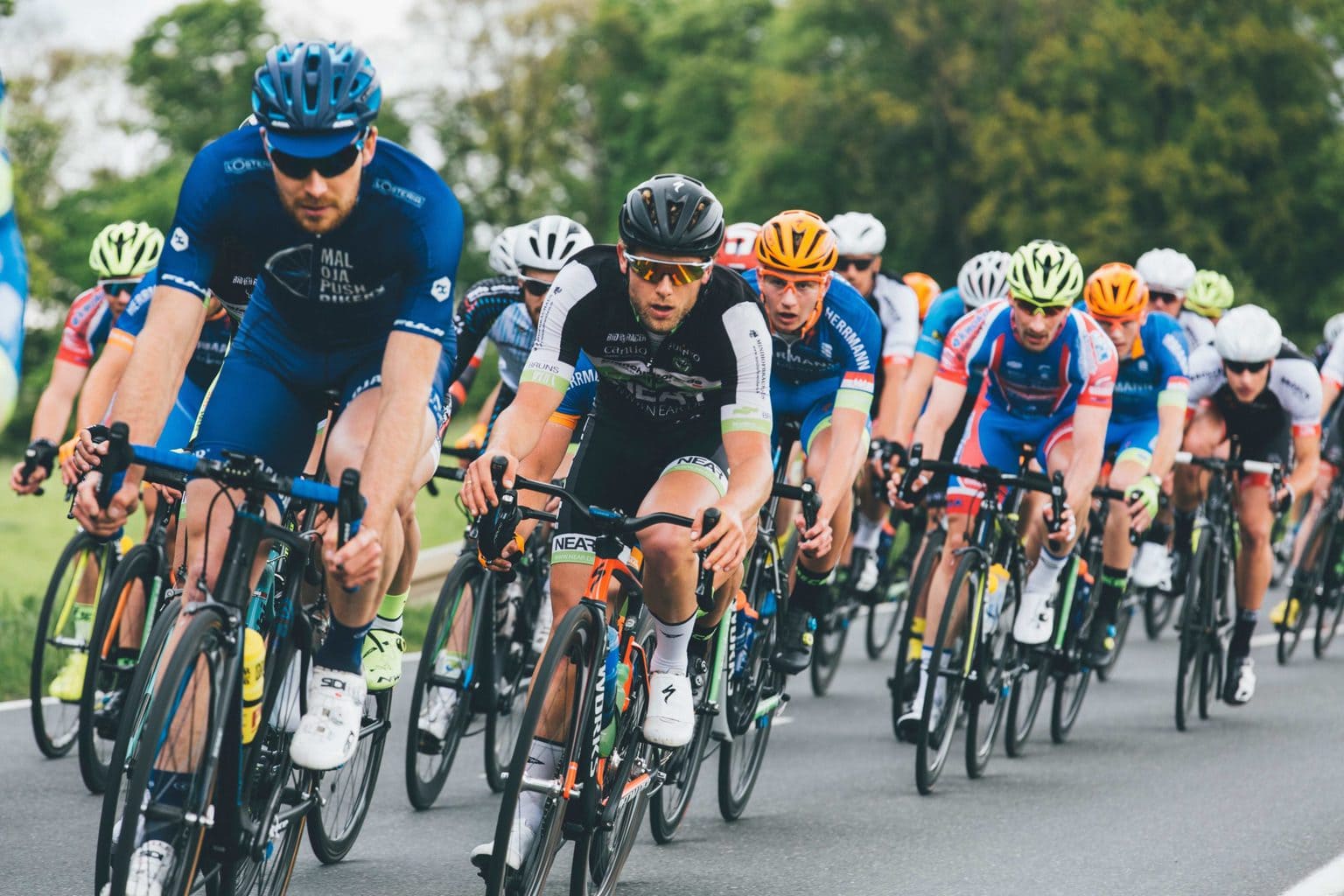
SUPER TELEPHOTO LENSES
Those that cover a viewing angle of 10º to 1º reach up to 600mm focal length.
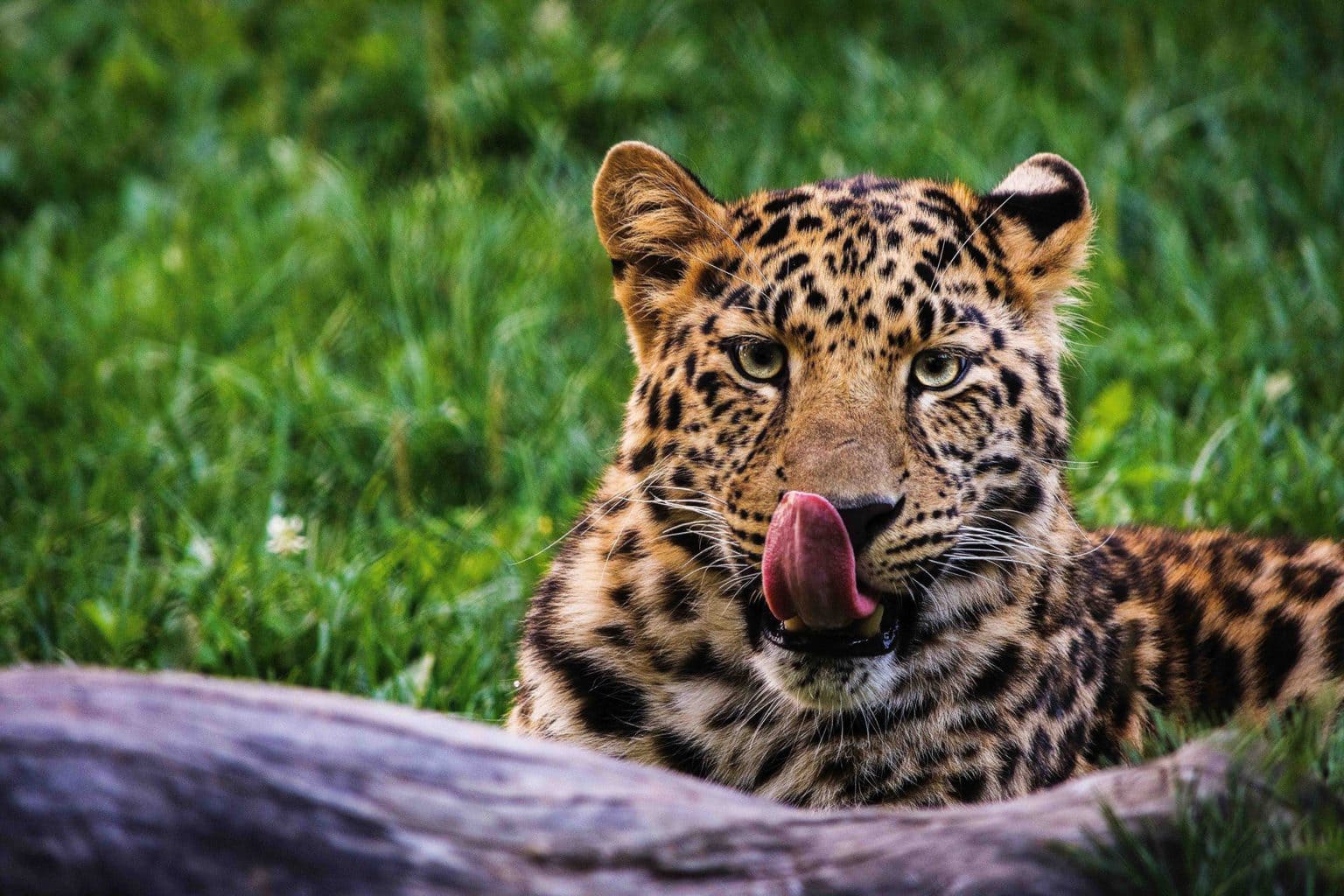
FOCAL LENGTH AND DISTORTION
The objectives, depending on the focal length, present more or less distortions.
The ones that most resemble the way our eyes see are the standard ones. However, telephoto lenses, for example, compress the shots, in addition to causing more blur.
Wider ones offer greater depth of field, but also cause a lot of line and facial distortions.
Let's see an example of this, the subject is the same, our friend Mario, but what about his face and body, look at the shoulders in the different images. Also look at the background.

This detail is also important when choosing the lens to use at all times, as it will influence the final result.
Now that you are very clear about the fundamental technical aspects regarding the objectives, it is time for you to see what type of photography each one of them is ideal for, although with the examples before you may have already gotten a slight idea. ? .
A GOAL FOR EVERY OCCASION
While you can do almost any type of photography with any lens, each lens is designed for a particular use.
For example, although you can take a portrait using a wide angle, you will obtain better results if you use a short telephoto lens of 85mm that allows, when blurring the background, to give prominence to your subject and present less distortion.
If you want to get the most out of your lenses or you are about to buy a new one, you need to be very clear in which situations you will obtain the best results with each of these, or in other words, what you are going to use it for the most. .

There are several types of focal lengths that can be useful for close-up photography or macro photography.
At the end of the article I will explain which ones I consider most convenient.
LANDSCAPE OBJECTIVES
For this type of photography, you will need to include as much of the scene as possible in a single photograph. Well, the goal is to be able to transport the viewer inside the image, to walk through it and sit in the place.
The more space you want to show in your photographs, the greater angle of vision and, therefore, the shorter focal length the lens to use should have. So a wide angle (focal lengths less than 25mm in APS-C) becomes the most recommended option.
Now that you know what kind of lenses will get the best landscape results , and before you start taking pictures, I recommend that you take a look at the following article to transform beautiful landscape photos into spectacular images .

RECOMMENDED LENSES FOR SOCIAL PHOTOGRAPHY
The focal range that you are going to use in the world of social photography will depend on the type of shots you have in mind and the situations where you plan to take them.
Covering a wedding is not the same as taking portraits in a studio where you can take the time to change the objective according to the needs of the moment.
In any case, if what you have in mind is taking close-ups, the ideal is to work with long focal lengths.
That is, have a telephoto lens.
However, for full-length photos you'll need shorter focal lengths and larger angles of view, so with a standard lens you'll be able to do wonders.
In this type of photography it is not easy to choose between one focal point or another, since each one has its advantages and disadvantages.
What you must be clear about is what type of photographs you expect to take and decide what angle of view (or focal length) you will need to carry them out.
Do not hesitate to take a look at the following articles where each social photography topic is discussed in a more specific way.

ACTION GOALS
In this type of photography it is not necessary to take a wide panoramic view that shows the entire environment (unless this is what you are looking for and you require a wide angle) but rather the opposite: focus the viewer's attention at a given moment.
Always depending on how close you can get to the place where the action is taking place, the ideal choice for this type of photography is to have a short telephoto lens or a telephoto lens that allows you to be close to the action, but keeping your distance.
Although fixed focal lengths offer superior quality to those with variable focal length lenses, the latter will give you much greater versatility, since you can shoot using one or another distance according to the situation you want to photograph.
A 70-200mm or a 70-300mm can be ideal allies.
Be careful with extremely versatile lenses such as the 18-200mm because, although they avoid having to change lenses often, your photos will be less sharp and, therefore, you will sacrifice a lot of quality, for comfort.

OBJECTIVES FOR ADVENTURE PHOTOGRAPHY
In adventure photography it is where you will require the lenses with longer focal lengths.
Whether it's shooting a bird in flight, a soccer player scoring a goal, a race car turning a curve, or a lion stalking its prey in the grass , the distance you can get from your subjects is very considerable.
The recommended focal length for this type of photography starts at 100mm and can reach 600mm.
Of course, as long as your budget allows you to access such expensive optics.
In any case, if your camera is APS-C (sensor size) do not forget that, at 200mm you must multiply it by its factor (1.5 in Nikon and 1.6 in Canon, Pentax , etc.) to obtain its effective focal length , which will be greater as the size of the sensor is smaller compared to the Full Frame.
The further away you are from the subjects or objects you want to shoot, the longer focal length lenses you need to get some amazing close-ups.
I recommend, as far as possible, having a variable travel lens such as a 70-300mm that allows you greater versatility.
Keep in mind that the greater the focal length, the greater the risk that your photos will come out blurred as a result of shakes, so having a stabilized lens will allow you to shoot with lower speeds and work in situations with less light than one that does not. East.
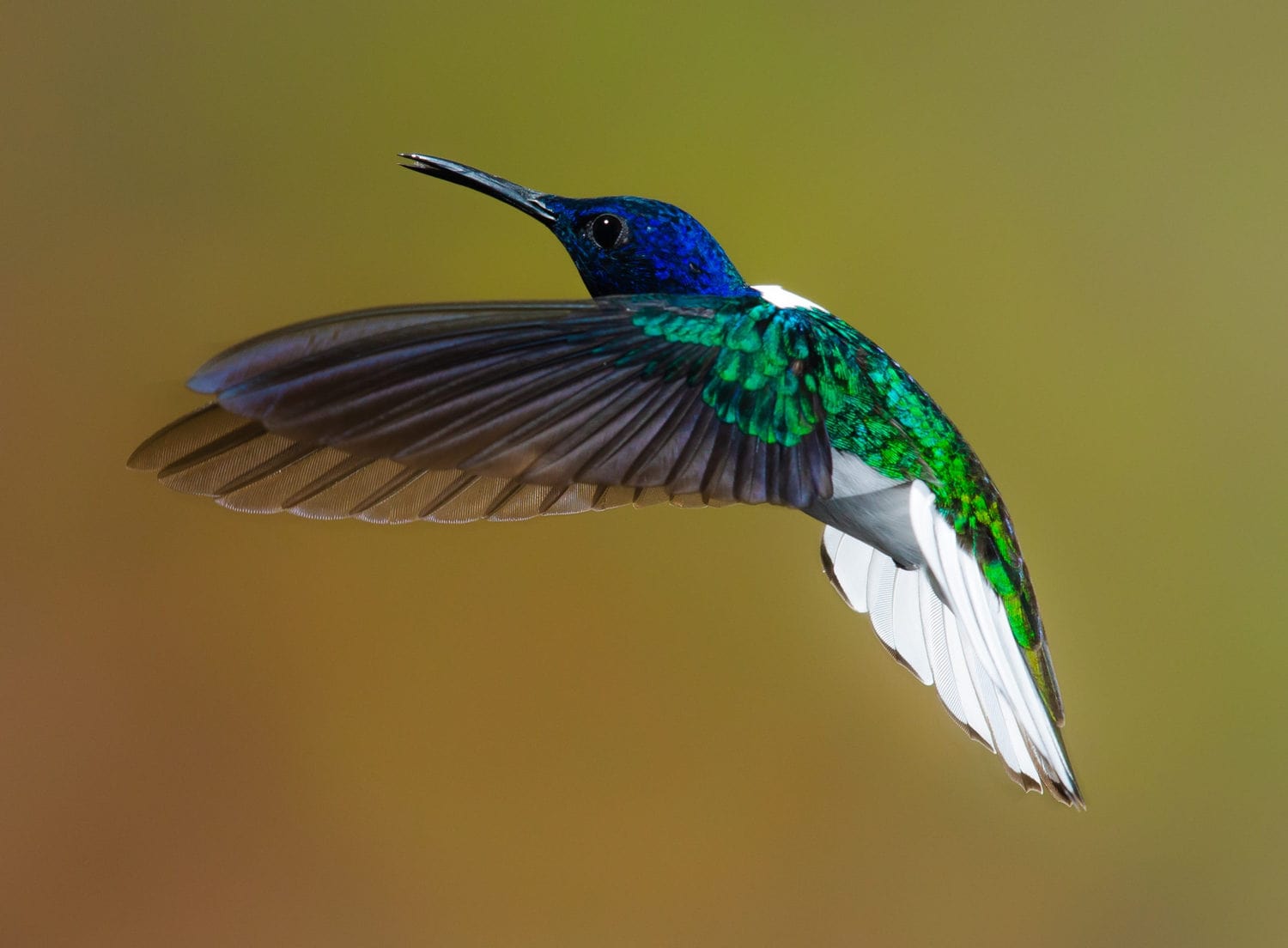
LENSES FOR MACRO PHOTOGRAPHY
Just like in adventure photography, the distance to your subjects is critical.
But in this case, you'll want to be close enough to fill the frame with an insect, and far enough away from it not to scare it away.
That is why, personally, I recommend that you use macro lenses with the longest focal length possible.
This way you can magnify the scene without interfering with it too much.
On the market there are endless macro lenses with different focal lengths and all of them can be useful to you, depending on the type of subject or object you plan to photograph.
For product photography, for example, you can use a 40mm focal length macro as it is unlikely that a watch will fly out of the scene.
On the other hand, if what you want is to photograph a bee while it collects pollen from a daisy, it will be almost impossible with a short focal length since you will scare the bee away.
The focal length to use in macro photography will depend on the type of subjects or objects to be photographed and the distance at which you can stand from them. Take a look at the following article if you want to master macro photography .
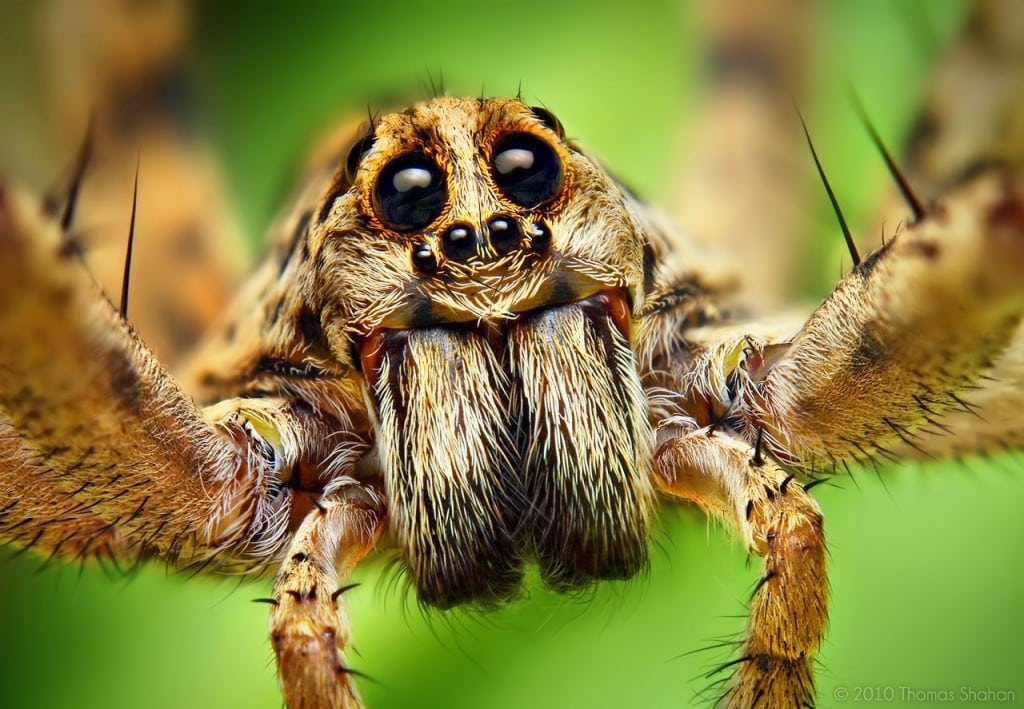
SUMMARIZING
While you can take photos with almost any lens, since the camera is just a means and the magic happens in your eyes, having a good lens designed for a particular purpose can make your job much easier.
You don't have to spend all your savings on the most expensive lens of the most recognized brands, there are endless "alternatives" that can even give you better results.
If you don't believe me, take a look at the following article: “Second Brands? No… 13 Prime Goals!” .
After all, the key is and always will be: take photos! If you have any questions, leave them in the comments and we will answer them as soon as possible, and if you have found my article useful, spread it, surely someone else will find it useful. Thank you and see you soon.

![FOCAL DISTANCE: SIMPLIFIED EXPLANATION [WITH EXAMPLES]](https://photographychef.com/wp-content/uploads/2023/01/FOCAL-DISTANCE.jpg)
